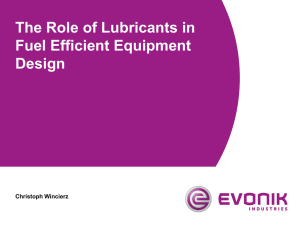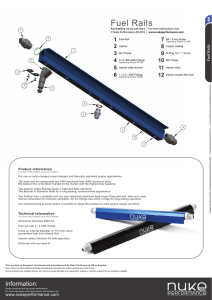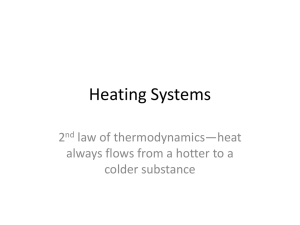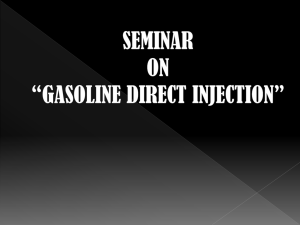WearCheck Actual Diesel sampling tests and failure results over 6
advertisement
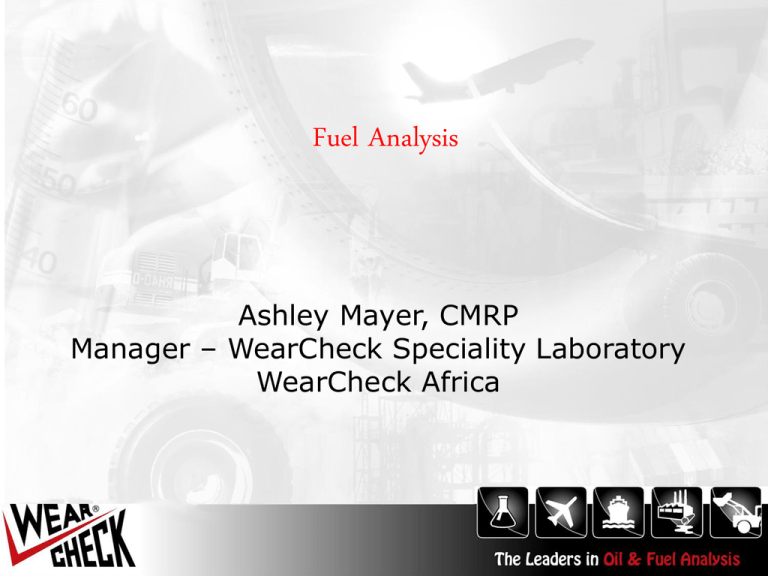
Fuel Analysis Ashley Mayer, CMRP Manager – WearCheck Speciality Laboratory WearCheck Africa Content Why We Analyse In-Service Lubricants Why We Analyse Fuel Lubricant Tests Fuel Tests Conducting Postmortems Actual Diesel Statistics 16 April 2012 – 16 October 2012 (6,985) Passed, 35% Failed, 65% Samples passed Samples failed Diesel Statistics 16 April 2012 – 16 October 2012 (6,985) 1800 1600 1400 1200 1000 800 600 400 200 0 Free Water Solids Moisture Sulphur Flash point Viscosity 90% recovery Density Fuel Tests Fuel Tests Flashpoint • Minimum temperature at which diesel will ignite • SANS 342: Minimum 55°C • Low flashpoint can cause burnt injector tips • Identifies petrol adulteration Fuel Tests Viscosity • Low viscosity causes pump and injector wear • High viscosity causes excessive pump loads • High viscosity causes large droplet size, slow ignition, smoke and reduced power • SANS 342: 2.2 cSt < vis < 5.3 cSt Fuel Tests Sulphur • Forms sulphur oxides which form strong acids • Forms fine particulate matter • SANS 342: < 500 ppm or < 50 ppm Fuel Tests Distillation • Measures temperature range at which fuel turns to vapour • Determines starting, power, emissions, fuel economy • Identifies adulteration of the fuel Fuel Tests Density • Determines energy content of the fuel • Can indicate IP contamination Fuel Tests Cetane Index • Ignition quality of the fuel • Determined by combination of distillation and density • Low cetane index causes difficult starting, rough running emissions • High cetane index causes premature ignition, burnt tips Fuel Tests Solid particulate contamination • Dirt, rust, microbial contamination • Causes blocked filters, pump and injector wear • Gravimetric test • SANS 342: < 24 mg / kg Fuel Tests Dissolved water • Causes rust, microbial growth • Can become free water when temperatures drop • SANS 342: < 500 ppm Fuel Tests Free/visible water • • • • Causes rust, microbial growth Injector/pump wear Often a result of poor sampling Often a result of deliberate contamination i.e. fuel theft Fuel Tests Illuminating paraffin (IP) • Reduced lubricity to pumps and injectors • Illegal, harsh penalties • Can test absence or presence ( 0.5%) Fuel Tests Bacterial Testing • Blocks up filters • Caused by long storage time, water content Why We Analyse Fuel Avoiding Unnecessary Overhauls Avoiding Production Loss …and Making MONEY! Lubricant Tests Elemental Analysis Ferrous Density Kinematic Viscosity Moisture Detection Engines Everything else, except transformers and refrigeration compressors Moisture Quantification All components except… …Transformers and refrigeration compressors FT-IR Spectroscopy Titrations (TAN and TBN) Gas Chromatography Debris Analysis


